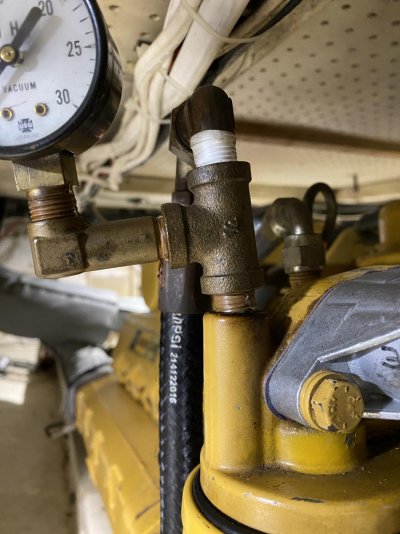heysteve
Senior Member
- Joined
- Jan 25, 2013
- Messages
- 186
- Vessel Make
- 1984 Sunnfjord 42
I arrived on anchor a few days ago without any issues. Today I was goofing around in the engine room and happened to notice the fuel feed to the secondary filter looked askew. Upon closer inspection, I could see the nipple connecting the vacuum gauge to the filter holder was cracked all the way through!
How the engine ran I don't know... perhaps the massive amount of pipe tape prevented an air gap. But if that fuel line had come off, the hose would have dropped down and potentially siphoned out a significant amount of diesel into the bilge. What a disaster that would have been... no engine and a massive diesel spill.
I feel like I really dodged a bullet which got me thinking of boating in general and the people who stay with it. There are outliers, but most people I've met over the years are really nice, generally optimists and certainly problem solvers. And most have great sympathy for other boaters and their problems as who among us hasn't had to deal with embarrassing, stressful or other generally challenging situations.
How the engine ran I don't know... perhaps the massive amount of pipe tape prevented an air gap. But if that fuel line had come off, the hose would have dropped down and potentially siphoned out a significant amount of diesel into the bilge. What a disaster that would have been... no engine and a massive diesel spill.
I feel like I really dodged a bullet which got me thinking of boating in general and the people who stay with it. There are outliers, but most people I've met over the years are really nice, generally optimists and certainly problem solvers. And most have great sympathy for other boaters and their problems as who among us hasn't had to deal with embarrassing, stressful or other generally challenging situations.


